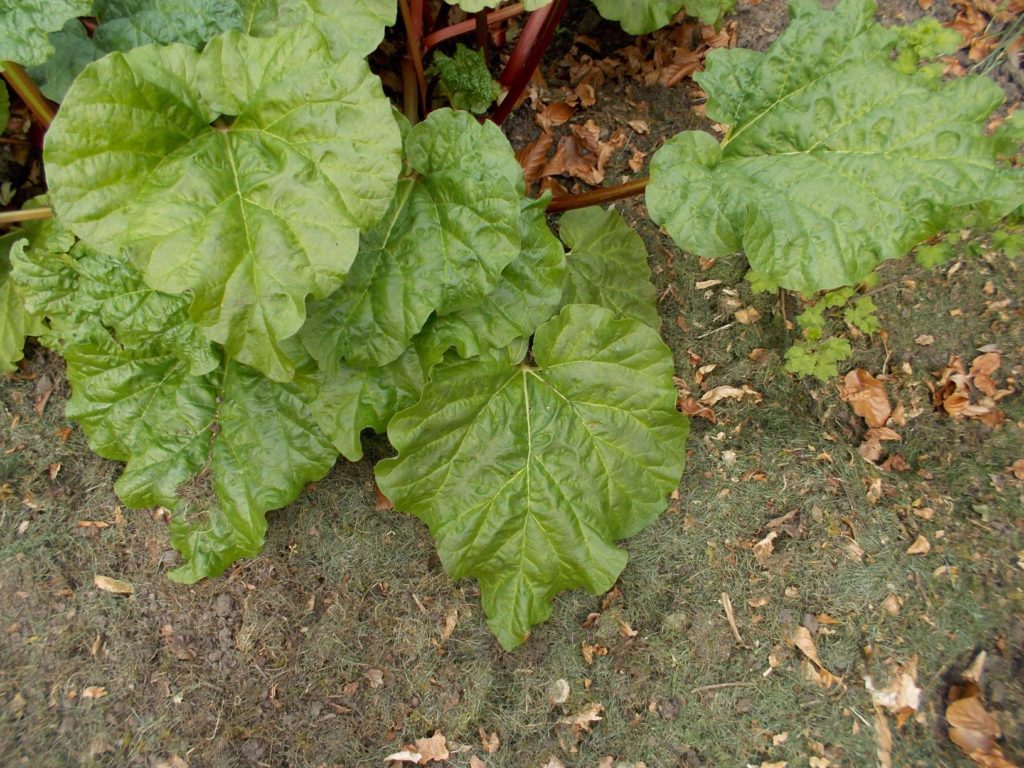As a child one of the humorous stories I remember is of a lady rushing out to shovel up a pile of horse droppings as the dray horses passed and deposited their breakfast on the road. “It is for the Rhubarb” as way of explanation. The Milkman replying “I prefer custard on mine”. Now, with the garden waste collection in Edinburgh and other Council areas halted and Civic Amenity sites shut, you too have the opportunity to put something other than custard on your Rhubarb. A clump of Rhubarb is a gross feeder, a lover of moisture through the summer and growing best in an organic soil. To maximise stalk production adding grass mowing’s to the base of the crown will help retain moisture. By gradually decomposing and being pulled into the soil through worm and insect activity, the organic matter then forms the next part of the chain, humus. This binds to soil particles, holding moisture and nutrients that benefit healthy plant growth. Soil fertility and thus plant health relies on the return of organic matter to the soil. Either as mulch or through incorporation by cultivation. Organic matter is a soil conditioner that helps water retention yet aids drainage. The raw ingredients for this organic matter are already in your garden. All the green waste that normally goes into the garden waste bin can be composted down to return goodness to your soil a year hence. Composting is an investment for the future. In essence, the security of next springs bowl of stewed Rhubarb (with custard!)
The Why, What, Where and How of Composting:
Compost is the product of decomposed organic material. It is essential for the well-being of our soil and thus the quality of crops and plants we grow.Humus is the organic constituent of soil; it is the end product of the decomposition and subsequent re-composition of organic matter by micro-organisms. Composting is easy, a natural process. It is the nearest thing to magic, in that from waste, which has a negative value, a crumbly, friable material results, which has a positive value.
Why compost at home?
To reduce the bulk produced by tree and shrub pruning, hedge cutting, grass clippings and other garden and household organic waste by about 50%. This occurs through the loss of water as moisture, and carbon as Co2. A net return of material to the garden will improve soil fertility and equally as important, the soil structure. The “feel good factor.” You know in your own mind that what you are doing is right. To save money on proprietary soil improvers. By becoming more self-sufficient you also save on transport costs.
Where to site the heap:
Obviously not the most visually attractive feature of the garden. However, the compost heap needs to be accessible from all areas of the garden and the home. You will have to be seriously motivated to carry kitchen scraps to the furthest point in the garden on a wet January evening. Choose a secluded, level or slightly sloping, free draining patch of ground. Remember to allow space to work around the heap. To be avoided at all cost is a colony of pernicious perennial weed. Never underestimate the magnetic pull that a compost heap has on a colony of Ground Elder, Bindweed, Marestail and the like. Once an infestation has occurred the only remedy is to empty the contents, carefully sieving out all fragments of the weed. The heap now has to be re-sited, in a clear area.
Size of the heap and temperature:
You should aim for a minimum size of 1 metre x 1 metre x 1 metre for the heap. As the material decomposes heat is generated. Small heaps will not reach a high enough temperature for thermophilic decomposition which is 45C – 80C. The temperature in small compost heaps is usually only several degrees higher than the surrounding air temperature. Mesophilic microbes will commence the digestion process in the temperature range 20 – 45C. Thermophilic microbes work on the heap from 45–80C. The mean daily air temperature in Edinburgh is around 8.9C. It was only during the months of June through to October that the mean air temperature rises above 10C. From this it can be appreciated that in small compost heaps it is virtually impossible to reach the thermophilic stage, i.e. above 45C. In a garden heap there is simply not enough volume in the heap to generate and retain heat.
What does this mean?
The compost produced in your back garden will not be sterile. Weed seeds and other pathogens will be present. You will have to use your judgement as to its suitability as a top dressing for a visible border in the garden. However, what you have produced is a valuable organic matter that can be dug into the soil to increase the humus content.
What to compost:
Ask the question: What would nature do? Composting is a natural process. The breakdown of organic matter over time has occurred on the forest floor since time began. By making compost we are managing this natural process. Broadly, any organic matter will compost. However, be aware of chemicals and other noxious substances that may have been added, sprayed or drenched into the potential feedstock of your heap. Perennial weeds should be dried out beyond resuscitation before adding to the heap. The best way to achieve this is to leave them on a path in the sun to dry out. The carbon / nitrogen ratio (C:N) is important for a healthy heap. Keep in mind if the material is soft and green (it can be crushed in the hand) it provides the nitrogen. If it cannot be crushed in the hand, woody material, it provides the carbon. An ideal ratio, by volume, (wheelbarrow or bucket) is 1:3, C:N. This mix will allow air circulation and also retain heat and moisture.
Is the effort worth it? Yes. Productive soil is our way to feed the nation.

